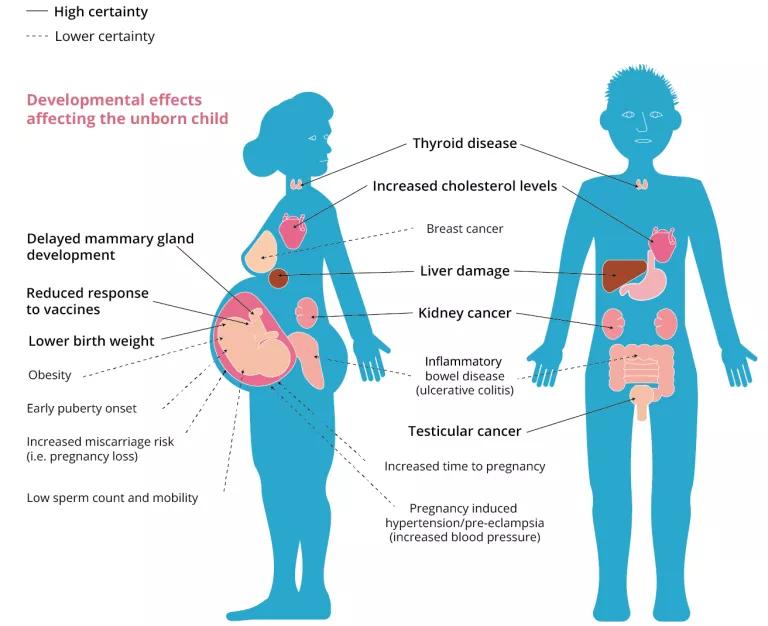What to Watch for in the EPA’s Final PFAS Drinking Water Rule
Expected EPA rule could take a bite out of the “forever chemicals” in tap water crisis.

Dee Dwyer for NRDC
The EPA estimates that about one in four people in the United States (70 to 94 million) have tap water contaminated with toxic “forever chemicals” (PFAS) at levels exceeding the drinking water standards that the EPA proposed for six of them in 2023. That is troubling, since these chemicals can be extremely toxic at very low doses and highly persistent in the environment and our bodies. Now the EPA needs to finalize those proposed rules ASAP. President Biden had promised during his campaign and soon after taking office that it was a priority for his administration to issue PFAS drinking water standards.
The EPA delivered a copy of its final rules to the White House Office of Management and Budget (OMB) for approval on December 15, 2023. The OMB’s 90-day review period, authorized by an executive order, expires on March 15, 2024.
The chemical industry, U.S. Department of Defense (DOD), water utilities, and others have been fighting against strong drinking water standards for PFAS for years. The chemical industry and DOD are worried primarily about their cleanup liability, since they are major polluters and drinking water standards often are considered as a starting point in establishing toxic waste cleanup targets (though feasibility and other issues are also considered). Water utilities are concerned about the costs of taking PFAS out of their water. We are troubled that this political backlash could further delay or weaken the final rule—but this must not happen.

Effects of exposure to PFASs on human health
The EPA’s proposed rule was relatively strong for the six PFAS it covers, though there are more than 14,000 chemicals in this class, some of which are likely more widespread in drinking water than the six covered by the rule. People in contaminated communities across the country have lost parents, children, and other loved ones after exposure to PFAS; studies have linked cancer, liver and heart disease, low birth weight, immune system issues, and other diseases with PFAS exposure. The longer that the government waits to establish federal drinking water standards, the more people will be exposed, in violation of the Safe Drinking Water Act mandate to reduce the harmful effects from drinking water contaminants.
The proposed rule is an important step forward. The EPA correctly found that there is no safe exposure level for many PFAS, including PFOA and PFOS, and it proposed maximum contaminant levels (MCLs) for PFOA and PFOS that are readily achievable using existing treatment technologies. The EPA also recognized the serious health risks associated with exposures to mixtures of four other PFAS—GenX, PFBS, PFHxS, and PFNA. The agency proposed a combined MCL for these four PFAS that is designed to protect people who are exposed to those contaminants individually or in combination, using a Hazard Index approach that pools the levels of these four PFAS together in a single standard and weighing each contaminant based on the hazard it presents. The EPA’s proposal is supported by an extensive factual record. The agency must resist efforts to weaken the proposed levels and diminish the rule’s protections.
What will the final rule look like? Here are the key items we will be looking for when the rule is released. (See our extensive formal comments for more details.) Does the rule:
- Cover all six PFAS, including MCLs for PFOA, PFOS, and a Hazard Index–based MCL for GenX, PFBS, PFHxS, and PFNA?
- Stick with the MCL levels proposed, or does it strengthen or weaken them? We had urged the EPA to reconsider and strengthen the MCLs for GenX, PFBS, PFHxS, and PFNA. Many industry representatives were gunning for these standards, urging that they be substantially weakened or not issued at all.
- Update its economic analysis to account for more of the health benefits that the agency did not quantify in its proposal? These include: a reduced risk of testicular cancer; reduced thyroid, liver, and immune system toxicity; and shortened breastfeeding duration.
- Strengthen the proposal to require at least quarterly PFAS monitoring for all water systems with prior PFAS detections without exception, and to not permit such systems to evade further detections and necessary treatment by monitoring just once or twice every three years?
- Mandate public notification of MCL violations within 24 hours, as is required for all violations that may cause serious, short-term health effects?
The final rule is urgently needed and should be issued immediately. In addition, as EPA Administrator Michael Regan acknowledged, “[w]hile this proposal is a step forward, there’s no doubt there’s more work left to do.” The EPA should start a separate rulemaking to establish drinking water standards for the PFAS that are not covered by the EPA’s current proposal, including class-based standards addressing the harms from additional PFAS mixtures.
A final rule that at last addresses six widespread toxic forever chemicals would be a significant public health advancement and an important legacy for the Biden administration and EPA administrator. The agency has been wrestling with the toxic PFAS crisis for more than two decades. While more remains to be done, a strong rule would be a major step toward ensuring that every American family can turn on the tap and feel assured that their water is safe to drink.

Dirty Water: Toxic “Forever” PFAS Chemicals Are Prevalent in the Drinking Water of Environmental Justice Communities
NRDC Analysis: Peer-Reviewed Study Finds EPA Misses PFAS Chemicals Already Present in Drinking Water

The Burden of PFAS-Contaminated Drinking Water
Historic PFAS Drinking Water Regulations Proposed by EPA



